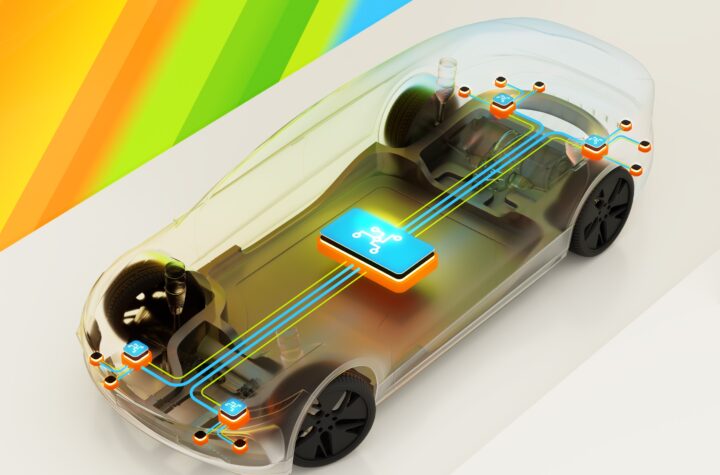
With three out of four drivers believing that hands-free technology is safe to use, Americans may be surprised to learn that these popular new vehicle features may actually increase mental distraction, according to new research by the AAA Foundation for Traffic Safety. This research can serve as guidance to manufacturers who increasingly market hands-free systems as safety features. The good news for consumers is that it is possible to design hands-free technologies that are less cognitively distracting, according to the research.
The results, which build on the first phase of the Foundation’s research conducted last year, suggest that developers can improve the safety of their products by making them less complicated, more accurate and generally easier to use – a point AAA hopes to use in working with manufacturers to make hands-free technologies as safe as possible for consumers. While manufacturers continue their efforts to develop and refine systems that reduce distractions, AAA encourages drivers to minimize cognitive distraction by limiting the use of most voice-based technologies.
“We already know that drivers can miss stop signs, pedestrians and other cars while using voice technologies because their minds are not fully focused on the road ahead,” said Bob Darbelnet, chief executive officer of AAA. “We now understand that current shortcomings in these products, intended as safety features, may unintentionally cause greater levels of cognitive distraction.”
Using instrumented test vehicles, heart-rate monitors and other equipment designed to measure reaction times, Dr. David Strayer and researchers from the University of Utah evaluated and ranked common voice-activated interactions based on the level of cognitive distraction generated. The team used a five-category rating system, which they created in 2013, similar to that used for hurricanes. The results show:
— The accuracy of voice recognition software significantly influences the
rate of distraction. Systems with low accuracy and reliability generated
a high level (category 3) of distraction.
— Composing text messages and emails using in-vehicle technologies
(category 3) was more distracting than using these systems to listen to
messages (category 2).
— The quality of the systems’ voice had no impact on distraction levels –
listening to a natural or synthetic voice both rated as a category 2
level of distraction.
The study also separately assessed Apple’s Siri (version iOS 7) using insight obtained from Apple about Siri’s functionality at the time the research was conducted. Researchers used the same metrics to measure a broader range of tasks including using social media, sending texts and updating calendars. The research uncovered that hands- and eyes-free use of Apple’s Siri generated a relatively high category 4 level of mental distraction.
To put all of this year’s findings in context, last year’s research revealed that listening to the radio rated as a category 1 distraction; talking on a hand-held or hands-free cell phone resulted in a category 2 distraction; and using an error-free speech-to-text system to listen to and compose emails or texts was a category 3 distraction.
“Technologies used in the car that rely on voice communications may have unintended consequences that adversely affect road safety,” said Peter Kissinger, President and CEO of the AAA Foundation for Traffic Safety. “The level of distraction and the impact on safety can vary tremendously based on the task or the system the driver is using.”
To assess “real-world” impact, Dr. Joel Cooper with Precision Driving Research evaluated the two most common voice-based interactions in which drivers engage – changing radio stations and voice dialing – with the actual voice-activated systems found in six different automakers’ vehicles. On the five point scale, Toyota’s Entune® system garnered the lowest cognitive distraction ranking (at 1.7), which is similar to listening to an audio book. In comparison, the Chevrolet MyLink® resulted in a high level of cognitive distraction (rating of 3.7). Other systems tested included the Hyundai Blue Link (rating 2.2), the Chrysler Uconnect(TM) (rating 2.7), Ford SYNC with MyFord Touch® (rating 3.0) and the Mercedes COMAND® (rating 3.1).
“It is clear that not all voice systems are created equal, and today’s imperfect systems can lead to driver distraction,” continued Darbelnet. “AAA is confident that it will be possible to make safer systems in the future.”
This phase of the research highlights the variability in demands across all the systems tested.
AAA is calling for developers to address key contributing factors to mental distraction including complexity, accuracy and time on task with the goal of making systems that are no more demanding than listening to the radio or an audiobook. AAA also plans to use the findings to continue a dialogue with policy makers, safety advocates and manufacturers.
To view the full report, “Measuring Cognitive Distraction in the Vehicle II: Assessing In-Vehicle Voice-based Interactive Technologies,” and other materials on distracted driving, visit NewsRoom.AAA.com. This study builds upon groundbreaking research conducted last year, which found that drivers can be dangerously distracted even if their eyes are on the road and their hands are on the wheel. AAA promoted the study in the release: Think You Know All About Distracted Driving? Think Again, Says AAA.
Established by AAA in 1947, the AAA Foundation for Traffic Safety is a 501(c)(3) not-for-profit, publicly-supported charitable educational and research organization. Dedicated to saving lives and reducing injuries on our roads, the Foundation’s mission is to prevent crashes and save lives through research and education about traffic safety. The Foundation has funded over 200 research projects designed to discover the causes of traffic crashes, prevent them and minimize injuries when they do occur. Visit www.aaafoundation.org for more information on this and other research.
As North America’s largest motoring and leisure travel organization, AAA provides more than 54 million members with travel, insurance, financial and automotive-related services. Since its founding in 1902, the not-for-profit, fully tax-paying AAA has been a leader and advocate for the safety and security of all travelers. AAA clubs can be visited on the Internet at AAA.com.












More Stories
Cybord TCI – The Future of Manufacturing Integrity
Claas Bracklo on CharIN’s Global Standards Drive for Seamless, Universal EV Charging Systems and Future Innovations in Interoperability
NXP accelerates the development of software defined vehicles with new family of Ethernet switches